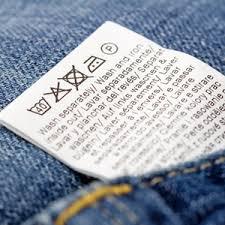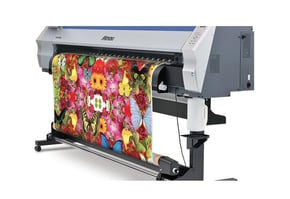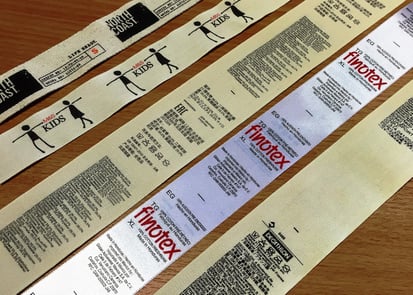|
In Apparel/Garment label printing, digital innovations have been slow to develop, despite the obvious benefits in a fast-changing fashion sector where overall the variety of garments is increasing but the individual orders are decreasing. As part of the ever evolving world of digital innovation, we will be attending the world's largest international textile and garment technology exhibition; ITMA 2019 in Barcelona! Providing an unrivalled marketplace and knowledge platform, ITMA is set to feature more than 1,600 exhibitors and an attendance of over 120,000 visitors. Come and join us in June! |
|
 |
Presently, the dominating methods in printed apparel label applications are covered by Analogue Flexo for volume production or Digital Thermal Foil Printing for smaller runs. The technical challenges in developing any new advances in digital technology are wide-ranging, and the following needs to be considered:
|
A digital solution that provides efficiency, flexibility, quality and meets the above challenges is a tall order. There are three main types of digital textile printing. The first is Thermal Foil Transfer. The second is CMYK scanning. The third is digital ink jet, and today’s machines are faster, cheaper, and more effective than ever before.
 |
1) Digital Thermal Transfer PrintingThis technology is common in label printing, having been available for 40 years in various forms. It involves utilising thermal transfer techniques to melt ink foil onto the fabric, resulting in an image transfer. Today, they are digitally controlled, leading to greater efficiency and accuracy. This method flaunts compatibility with a wide range of fabric substrates. Whilst the quality of this process is high, foil stamping is quite wasteful. The thermal part of the process destroys the foil with as much as 90% of the foil value lost in waste. Even so, this type of machine is still the go-to option for many garment producers, particularly those who choose to work entirely in-house. Colours are limited to black and red for garment label applications. |
 |
2) CMYK Scanning (Full Colour Dye Sublimation)If polyester is your material, this digital solution may be for you. Although quite slow, full colour is possible, and the image quality is sharp and vivid. The main drawback is that cottons and other non-polyester fabrics have limited use with this printing method, so it has a very specific purpose. Typically, this equipment is used for production of flags, sportswear, and promotional textiles. These machines are rarely used for narrow web label applications. |
 |
3) Digital Ink JetSingle-pass Ink Jet technology is a truly exciting area of development. The advances in wide web textile printing can already be seen with Konica, Durst & HP presenting commercial solutions. Today’s digital Ink Jet machines can offer the same sort of volume output as analogue printing, but boast all the flexibility, advanced software, graphic capabilities, and control that digital can offer. |
|
|
At Focus, our new Dtex will be the first machine developed specifically for garment label production. We have taken knowledge already gained from our existing digital technologies in the packaging sectors. This will provide a platform for a new generation of digital printing machines specifically developed for the garment label industry. There are still challenges to overcome for this technology, but with the cooperation of ribbon producers and ink suppliers, the future is exciting! |
What Next?
As more garment label printing businesses make the switch to digital in other areas of their business and see the benefits, they will demand the same type of solution for textile labelling. Manufacturers of fabrics, coatings and inks will get on board and those early adopters will benefit long term.
Those sticking with analogue presses are at risk of struggling to keep up with rising costs of production balanced against shorter run lengths. The speed of new digital machines and seamless job changes will prove invaluable. To see the developments in digital garment labelling for yourself, book a visit to our showroom or come and find us at ITMA 2019! The digital print world is evolving - don’t get left behind!








